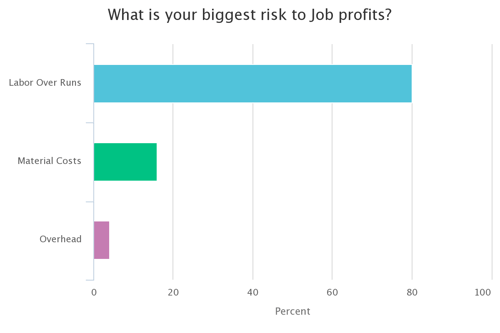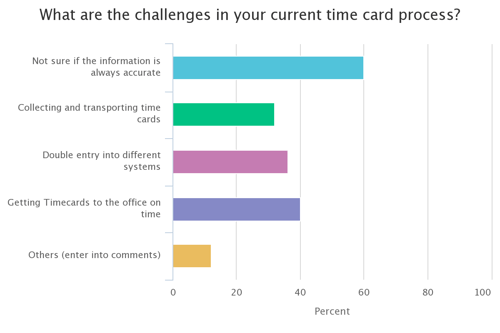Flexible Time Keeping for the Field
It’s a universally acknowledged truth that the biggest risk to profit is always labor. An eSUB survey found that 63% of respondents found labor to be their profit risk. Labor is the work and a unit that actually puts together the project. Without labor, projects would just be a series of parts. So how does labor end up being the biggest risk to profit?
Labor ends up being a risk somewhere between the estimation process and actual construction. Unexpected costs and delays, changes to the team, and more can create labor unit nightmares. Jobs that have many cost codes can make things even more complicated if each activity isn’t tracked correctly. These processes in turn make it harder to estimate jobs in the future accurately.

Table of Contents
The Challenges of Keeping Time
Keeping track of time in the field is a great way to reduce the risks to profit. However, accurately tracking time, and correctly inputting time can be other deterrents. Some systems of timekeeping are more accurate and faster to process than others, but getting companies to switch to these improved systems can be difficult.
Companies generally are concerned with time tracking accuracy and ensuring the time cards are in to the office correctly. Getting time cards in at the right time is the only way to guarantee that the office can quickly deal with them. Then there are always concerns about the overall accuracy of time cards. Whether time is under-represented or the cost codes associated with it aren’t accurate, or worse that people are misrepresenting their time.

Time Reporting and Time Processing
Part of the reason why time reporting can be so difficult is the methods companies use to look at time. Most sources agree that 50% of construction companies are still using paper time sheets to report on time in the field. And most companies recognize that their current process if it works, needs to be improved.
Switching from paper time sheets to a mobile time solution is one of the only ways to ensure that time reporting is more accurate and it’s easier on the back office. With the new technology, though, there are many ways to track and report employee time. Here are three of the best ways to track employee time.
Foreman Time Tracking
Keeping time in the field can be hard, but the foreman can make it easier. They know who was on site and what was worked. Great construction project management software with timekeeping capabilities should offer a foreman solution. The foreman solution allows them to select the workers for the day, the project, and cost codes, add the work hours, report any lost time, and units complete. One of the benefits of it is that it is quick, and all information in the system can be easily exported or pushed into an accounting package. The other advantage is that it’s easier to track lost hours this way, which can improve efficiency.
Individual Punch
An individual punch system works on each worker’s phone. They have a username and password to log in to the system, they can easily clock in and clock out from their phone. Workers can even use a breaks button to pause for a specific time. Great individual time apps aren’t just tracking time and cost codes, they look at the location of each punch. By having a location verification, the back office can feel secure in the accuracy. Great individual time apps also ask employees to verify if they were injured and took their breaks, this way companies have all their needed information.
Kiosk Punch
Kiosk time has many benefits in construction. One of the big reason why kiosk time is a popular method is that it lives on a tablet in the trailer rather than on everyone’s individual phones. This means that there isn’t a significant pushback from installing the software on their phone. Kiosk mode should work similarly to individual time. But this time users can click on their name and punch in a specific code to clock in and out. Kiosk should be similar to any individual punch system because some projects might need an individual punch system to a kiosk system. Similar systems reduce training, and can help when it comes to moving from one site to the next.
Conclusion
Labor shouldn’t be the biggest risk to profits in this century. There are so many flexible timekeeping systems available, it’s hard to not find a great system for your business. The many timekeeping systems can improve business performance and simplify timekeeping.
